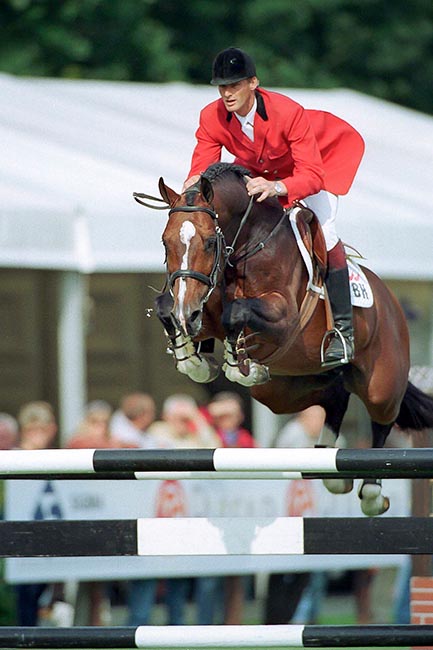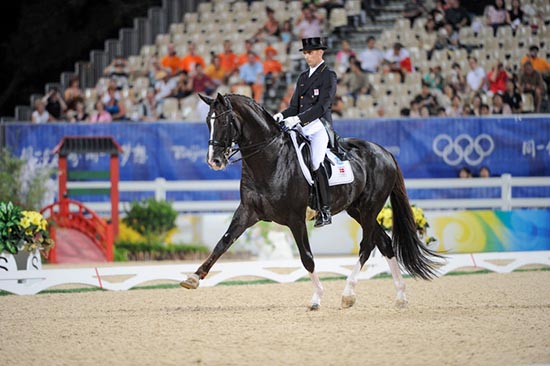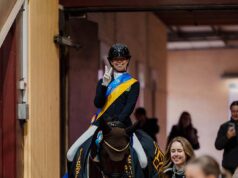Editor’s note: While BN regularly publishes the ranking lists calculated on behalf of the WBFSH and based exclusively on results recorded in FEI competitions, rankings are also being produced by other parties based on entirely different criteria. As information is knowledge in the sport horse breeding industry, ‘alternative’ rankings provide additional perspectives for breeders, although we do not necessarily support their results. We have Christopher Hector (CH) and Gemma Alexander (GA) to thank as co-authors of this article.
CH: In 2017, I interviewed Dutch breeding expert, Arie Harmon at the 2017 FEI/WBFSH Young Horse Championships in dressage. I asked him if the KWPN would be following the lead of the German FN, and separating the breeding values into two tables: One based on results in young horse competition, and one on the results of open competition. He suggested that this wasn’t necessary, and that one could gain this sort of information by tracking the fortunes of stallions over a period of time. Thus, looking at Jazz, we could see that he started with an okay value, but that this greatly improved over time as his progeny starred in the higher levels of the sport. Similarly we could identify the young horse shooting stars as their values plummeted.
The German FN were only too happy to make available the values for 2002 and 2012 which, joined to the 2017 values they had already sent, provided food for thought. The Dutch, who inspired the project, were not so happy, saying that the changes in the way the values were calculated made comparisons invalid, and would not listen to my argument that we were not about to compare different stallions from different eras, but look at how an individual stallion's fortunes fluctuated over time and how accurate this might be as a estimation of his worth as a sire.
Of course 'the numbers' themselves, have no absolute worth and will vary with the ways they are calculated, but that is not what we are looking at. The breeding values were always supposed to be a guide to breeders, so if a stallion is in the top ten, this is a suggestion to use that stallion. If the stallion stays in the top ten over a period of time, then the evaluation gains strength. If, however, we have stallions that regularly feature with very high breeding values (ie. compared to other stallions of that year) but they then appear a while later, with very low values (compared to stallions of that year), especially when the reliability index remains more or less constant, then we call into question the values themselves as a guide to the breeder. However, I do have a copy of the 2011/12 KWPN values and when the new ones emerge in a couple of weeks, can follow Arie's advice.

Photo: Dirk Caremans
Meantime, it was Gemma Alexander’s turn to taste the wonder of 'the numbers' and I shot the German lists across to her.
Her reaction?
GA: I’m someone who has made a career out of analyzing statistics, so when Chris suggested I get stuck into the German FN rankings – something I have not previously considered much as a breeder – I was quite interested to learn how this revered breeding-by-num-bers system worked.
From the data provided by the German FN (2017 stallions with rankings greater than 128; 2012 and 2002 stallions with rankings greater than 140), the first thing that struck me as odd was that only four stallions had earned a ranking place in all three subject years: Carthago (Capitol I x Calando I), Concerto II (Contender x Ahorn Z), Stakkato (Spartan x Pygmalion) and Cassini I (Capitol I x Caletto II). The top 24 (!!) horses in 2017 did not record a ranking in all three years.
My initial thought was that this must be due to the fact that these stallions were obviously younger, with progeny not of an age in 2002 and 2012 to boost their rankings. But then I realized the top five were: Heartbreaker (Nimmerdor x Silvano, born 1989), Diamant de Sémilly (Le Tot de Sémilly x Elf III, born 1991), Kannan (Voltaire x Nimmerdor, born 1992), Galoubet A (Almé x Nystag, born 1972) and Quick Star (Galoubet A x Nithard X, born 1982). These are heavyweights in the stallion world with internationally starring progeny dating back decades, yet none of these stallions had rankings greater than 140 in either (or both!) 2002 and 2012? The first alarm bells started ringing...
CLICK HERE TO SUBSCRIBE TO BREEDING NEWS
SUBSCRIBERS CAN READ THE COMPLETE ARTICLE BY LOGGING IN AND RETURNING TO THIS PAGE




